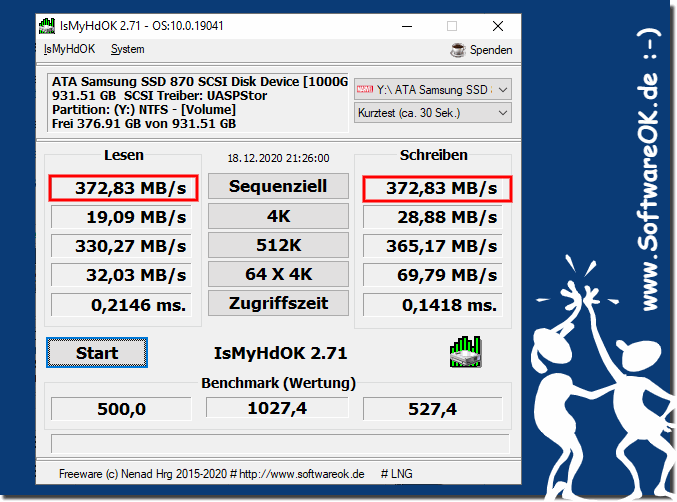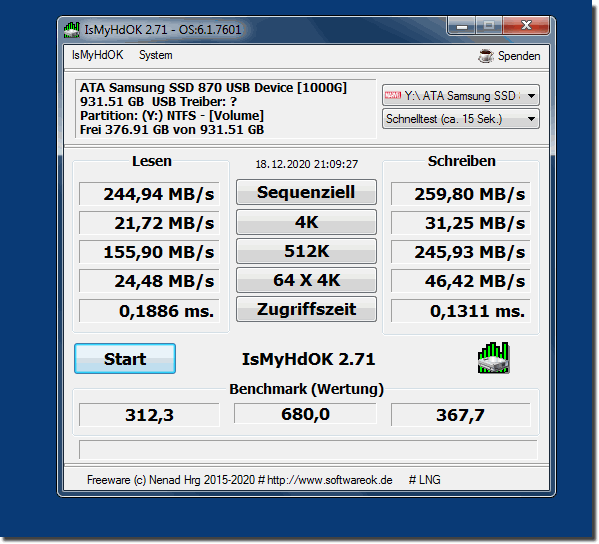Depending on the controller installed on the M.2 SSD or other SSDs, you get different values, the driver or the Windows version, as well as the update, play a role!1. The example measurement on Windows 10 and 7:For M.2 SSDs and other SSDs, there are different controllers that are responsible for managing data and performance. Here are some common controller types: 2. M.2 SSD Controller:
|
| (Image-1) Samsung external SSD hard drive under Windows 10! |
 |
| (Image-2) Samsung external SSD hard drive under Windows 7! |
 |
2.) M.2 SSD controllers:
1. SATA Controller
:
- Uses the SATA interface, which is also used for traditional 2.5-inch SSDs. These controllers are usually less powerful than NVMe controllers.
2. NVMe Controller
:
- Intel
: e.g. Intel controller for Optane SSDs or Intel 600P and 700P series SSDs.
- Samsung
: e.g. Samsung Phoenix (960 EVO) or Samsung Elpis (980 PRO).
- Western Digital (WD)
: e.g. WD Black SN850 or WD Blue SN550.
- Micron
: e.g. Micron 2210.
- Phison
: e.g. Phison E16 or E18 used in many NVMe SSDs such as the Corsair MP600 and Adata XPG Gammix S50.
3.) PCIe SSD controllers:
1. SATA-to-PCIe Bridge Controller
:
- Allows the operation of SATA SSDs via a PCIe interface when there is no native SATA interface on the motherboard.
2. NVMe PCIe Controller
:
- Intel
: e.g. Intel SSD 660P or Intel SSD DC P4510.
- Samsung
: e.g. Samsung 970 EVO or Samsung 980 PRO.
- Western Digital (WD)
: e.g. WD Black SN750.
- Sabrent
: e.g. Sabrent Rocket 4 Plus.
4.) Other SSD controllers:
1. SATA SSD controllers
:
- SandForce
: e.g. SandForce SF-2281.
- Marvell
: e.g. Marvell 88SS9187.
2. U.2 SSD controllers
:
- Intel
: e.g. Intel DC P3600.
- Micron
: e.g. Micron 9300 PRO.
These controllers significantly influence the performance, reliability and supported functions of the SSD. Modern NVMe controllers generally offer significantly higher speeds and better performance than SATA controllers.
FAQ 13: Updated on: 14 September 2024 14:26
